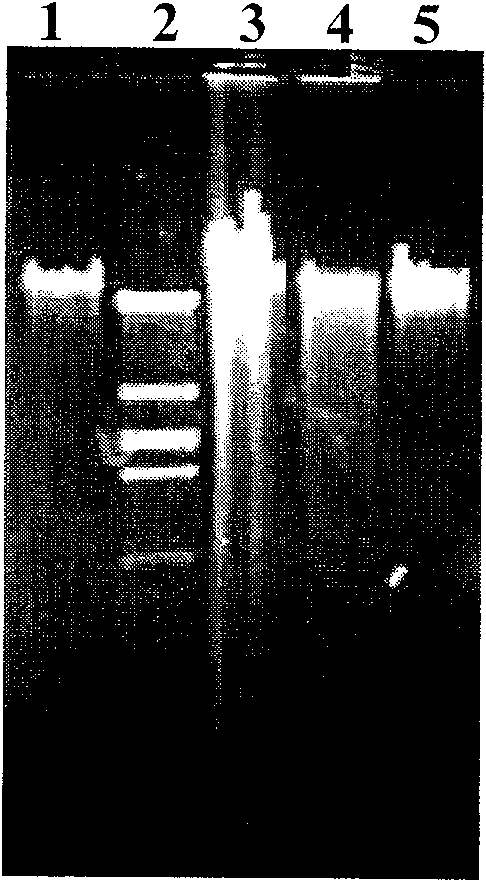Cellodextrin enzyme, encoding gene and application thereof
A technology encoding gene and cellodextrin, applied in application, genetic engineering, plant genetic improvement and other directions, can solve the problems of high cost, inability to truly realize industrialization, and high price, and achieve the effect of high cellodextrinase activity
- Summary
- Abstract
- Description
- Claims
- Application Information
AI Technical Summary
Problems solved by technology
Method used
Image
Examples
Embodiment 1
[0039] Example 1. Obtaining cellodextrinase Umcel5C and its coding gene
[0040] 1. Construction of a metagenomic library of uncultured microorganisms in the rumen of buffalo
[0041] 1. Extraction of metagenomics of uncultured microorganisms in the rumen of buffalo
[0042] Take 50g of buffalo rumen content (the source of the sample is the rumen of the buffalo just slaughtered in Nanning Meat Union Factory, and the collected sample is immediately stored in liquid nitrogen) and suspended in 200ml of 0.18M potassium phosphate buffer (pH6.5), Gently shake and place for 10 minutes to allow the cellulose particles in the rumen contents to automatically precipitate, discard the supernatant, and then add 200ml of 0.18M potassium phosphate buffer (pH6.5) to wash the pellet twice, the last time The precipitation block is directly extracted to extract the metagenomic DNA of the microorganisms adsorbed on the cellulose particles. Add 100ml extraction buffer (100mM sodium phosphate pH8.0; 100...
Embodiment 2
[0061] Example 2. Expression of Umcel5C in E. coli
[0062] 1. Construction of a recombinant vector (pET-umcel5C) capable of expressing umcel5C
[0063] After the gene with the coding signal peptide is expressed in vivo, the expressed product is likely to be secreted outside the cell. In order to avoid the secretion of the expression product out of the cell, it is only necessary to artificially synthesize the base from the 306th to the 1226th position of the 5′ end of the sequence 1 (that is, the amino acid in the umcel5C gene except the first 25 amino acids and the stop codon of the amino terminal of the coding sequence 2 DNA sequence, mainly to prevent the first 25 amino acids from forming a signal peptide), 921bp, the molecular weight of the encoded protein is expected to be 35.39691KDa, and the isoelectric point pI is 4.65.
[0064] Synthesize all the sequences of umcel5C gene except the first 25 amino acids and the stop codon of the amino terminal of coding sequence 2 (that is,...
PUM
| Property | Measurement | Unit |
|---|---|---|
| molecular weight | aaaaa | aaaaa |
| molecular weight | aaaaa | aaaaa |
Abstract
Description
Claims
Application Information
 Login to View More
Login to View More - R&D
- Intellectual Property
- Life Sciences
- Materials
- Tech Scout
- Unparalleled Data Quality
- Higher Quality Content
- 60% Fewer Hallucinations
Browse by: Latest US Patents, China's latest patents, Technical Efficacy Thesaurus, Application Domain, Technology Topic, Popular Technical Reports.
© 2025 PatSnap. All rights reserved.Legal|Privacy policy|Modern Slavery Act Transparency Statement|Sitemap|About US| Contact US: help@patsnap.com



